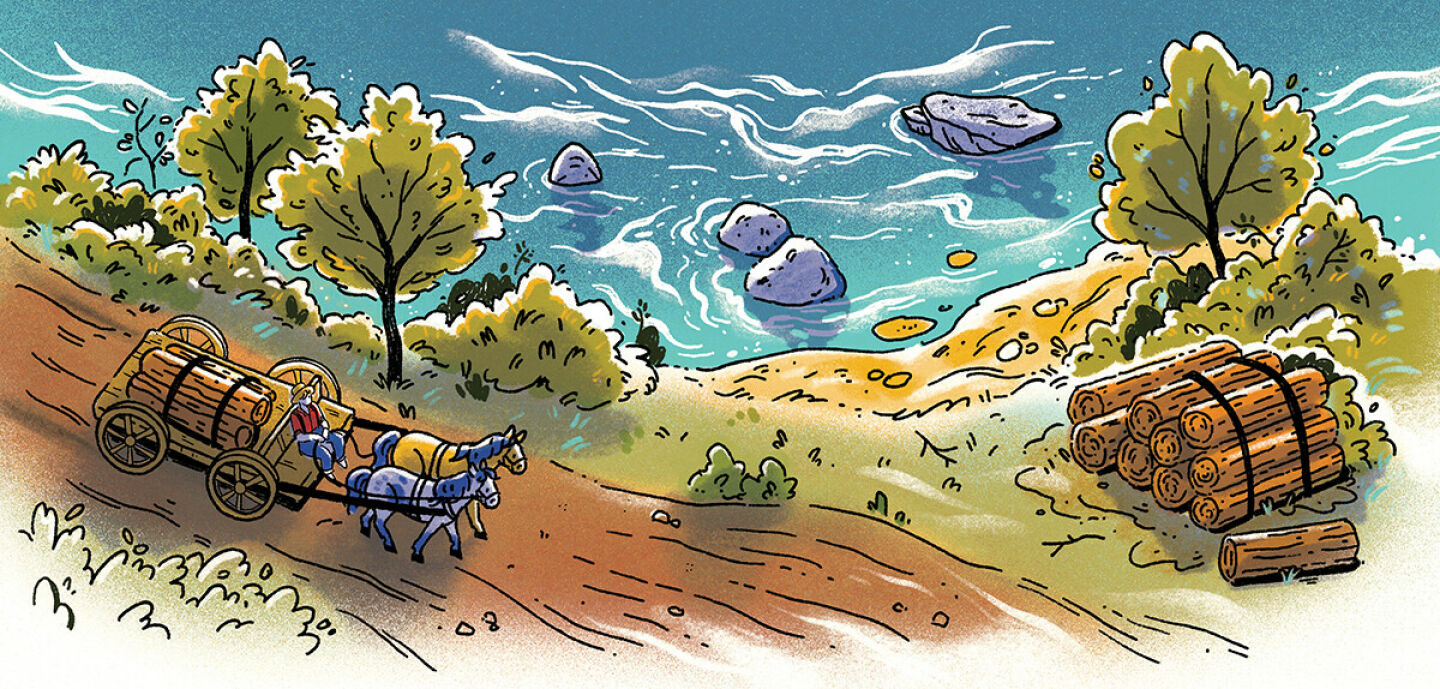
COLUMN: What’s So Cool About 1872?
taking a look back in time to the year the City of Eau Claire was founded
Patti See, illustrated by Sierra Lomo
This is the year Yellowstone becomes the first national park in the world and the Metropolitan Museum of Modern Art opens in New York City. The year you could see Northern Lights as far away as Cuba. George Westinghouse patents the automatic railway brake, and Popular Science Magazine is first published. Victoria Woodhull is the first woman nominated for U.S. president, though her name does not appear on the ballot.
Ulysses S. Grant is elected. Susan B. Anthony is arrested for voting; white women won’t earn suffrage for another 49 years.
Children sing along to “Reuben and Rachel;” adults listen to love songs like “Under the Silvery Stars” and “Moonlight on the Potomac.” Popular books include Around the World in Eighty Days, Through the Looking Glass, and Little Men. Eighty percent of the adult population can read. Anti-literacy laws for Black people and other people of color in many southern states were not repealed until after the Civil War, which ended just seven years earlier.
Poet Paul Laurence Dunbar, cowboy and western writer Zane Grey, and etiquette expert Emily Post are born. Coors and Heineken Breweries are established, and the Women’s Christian Temperance Union is in its early stages. Artists Whistler, Monet, and Renoir show their paintings around the world. It’s the year before the American Kennel Club is formed, before barbed wire and ice cream sundaes are invented, before the first cable car, before Jesse James and his gang pull off their first bank robbery.
It’s also the year that the villages of West, East and North Eau Claire incorporate as the City of Eau Claire.
”
The population is roughly 2,300, mostly Norwegian, Irish, French-Canadian and German immigrants drawn here for jobs at 40-some lumbermills. No wonder they will help Eau Claire earn the name ‘Sawdust City.’

PATTI SEE
Centuries before anyone thought of building a permanent settlement at the confluence of the Eau Claire and Chippewa Rivers this area is full of buffalo, white-tailed deer, red fox, moose, wolves, black bear, and, of course, badgers. The Sioux and Ojibwe peoples have thrived here for hundreds of years before English explorers and French-Canadian fur traders pass through. The first white settlers break ground in 1845. Then come the travelling “shanty boys” who follow the millions of acres of pines and mills that dot the rivers. These itinerant workers later will be called “lumber jacks.”
The first trains arrive here in 1870 and bring with them goods from St. Paul and usher in the era that comes to be known as the Gilded Age. That’s the year the first telegraph connects this area with other cities and the first reliable bridge is built over the river to link the three original villages. Eau Claire’s grand courthouse is under construction. Barstow and Water Streets are the main commercial areas of the city; brothels and taverns are many. The population is roughly 2,300, mostly Norwegian, Irish, French-Canadian and German immigrants drawn here for jobs at 40-some lumbermills. No wonder they will help Eau Claire earn the name “Sawdust City.”
In 1872, Wisconsin has been a state for almost 25 years, and its people speak many languages: Ho-Chunk and French, German and Menominee, Dutch and Oneida, Polish and Potawatomie, Swedish and Danish, Norwegian and English. The streets of Eau Claire are “paved” with sawdust, and citizens complain about wild dogs and pigs roaming through town. No canopy of mature trees means little shade. Every house, store, tavern, and brothel has its own outhouse
Childbirth is risky for mothers and babies. Working conditions are dangerous. Fires are common and often deadly. The Schlegelmilch family loses their home and gun shop when an entire block burns to the ground. The family builds an addition to their next residence out of brick. The Schlegelmilch House – now curated by the Chippewa Valley Museum – still stands at 517 Farwell St. where you can take a step back into 1872.